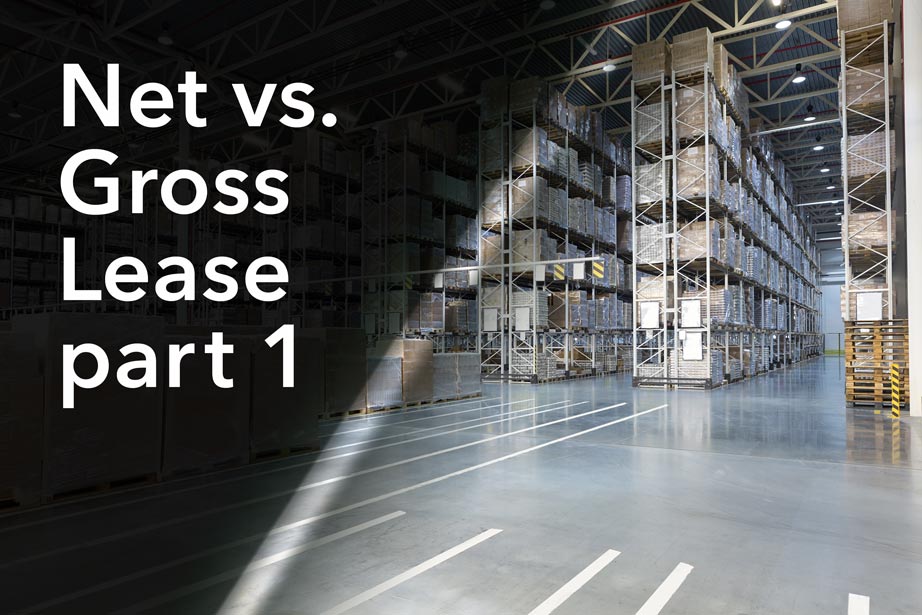Cost of Occupancy
A Net lease is one where the tenant pays a defined ‘base rent’ with built in annual escalation, and the tenant pays the additional ‘operating expenses’ for the property, which operating expenses are sometimes referred to as the ‘Net fees.’ These operating expenses include all costs of maintaining the property such as property taxes, insurance, management, and common area maintenance. In a Gross lease, the tenant pays the defined ‘base rent’ with built in annual escalation, and the operating expenses are included in that ‘base rent’ amount. You may be saying “I will take the ‘Gross lease’ version so I don’t have to pay any additional expenses.” If this was all there was to it, you would have made a wise choice. However, we need to consider that when comparing the features of two comparable properties, the ‘base rent’ on the Net lease would be considerably lower than the ‘base rent’ on the Gross lease. Why? Because on the Gross lease those additional expenses are included in, or added into, the ‘base rent’(see example below). In both of these cases there is a maximum market total per SqFt cost of occupancy (base rent + any operating expenses) that a tenant is willing to afford for a certain space – that is the number landlords are trying to find and continually increase and tenants are trying to keep lower. For a simplified example (40,000 SqFt Class A Distribution Space):
Accounting So why not just do it as a Gross lease as that appears to be more simple and straight forward? In many cases that is the right thing to do. For example, if you own either one or a small number of buildings or have a small number of tenants, Gross could be a more convenient/efficient way to manage the portfolio and cash flows. However, if you want these expenses clearly delineated for landlord and tenant(s), breaking out and billing for these expenses as separate line items would be the accounting strategy that you want to employ. This is really the heart of the issue, how do you want to account for income and expenses? Sometimes a Gross lease is more convenient, but for certain landlords, it is actually more convenient for them to have a consistent Net lease structure across the portfolio. In both cases, tenants should have the rights to audit any operating expense items. Semantics vs. Contents Now that we have understood our terms and some of the financial accounting reasons behind making the choice for a Net vs. Gross lease, let’s drill down on something very important to remember. It is not the title of the lease, either Net or Gross, that is most important, but what are the contents of the document. What we really find is that most Net are not true Net, or Triple Net, and most Gross leases are not true Gross, or Full Service Gross. Rather, they are modified in some manner, creating an almost hybrid version of the two. Therefore, what is vitally important when getting ready to sign any lease is not that you are relying on the label of Net lease or a Gross lease, but that there is an understanding of the actual conditions and mechanisms of the lease. There are a few other important distinctions to identify when considering the contents of a Net vs. Gross vs. a hybrid variation of the two leases, and we plan to highlight those in Part II of this article. We will look at the implications of Net vs Gross as it relates to Maintenance Responsibilities, Marketing the property, and best positioning and performance tactics and tips. Comments are closed.
|
AuthorChristopher J. Destino, SIOR, a Principal at Lee & Associates, is an engaging, responsive professional who enjoys working closely with his clients and helping them succeed. Categories
All
|
|
“Working with a Professional
Achieves Professional Results” |
Lee & Associates
Commercial Real Estate Services 1004 W. Taft Avenue, Suite 150 Orange, CA 92865 LeeOrange.com Corporate ID #01011260 |
Christopher J. Destino, SIOR
Principal 714.454.0668 [email protected] Destino Industrial Team DRE #01447060 |






